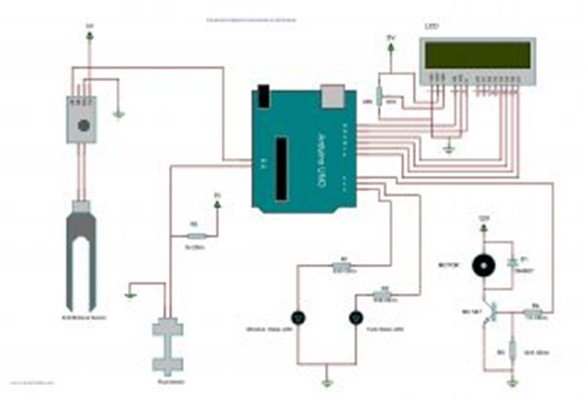Solar Powered Automatic Irrigation System with Dual Axis Solar Tracker
As we already talked about Solar panels and Dual Axis Solar Tracker in previous blog post let’s directly jump to Solar Powered Automatic Irrigation System with Dual Axis Solar Tracker
What is Solar Powered Automatic Irrigation System with Dual Axis Solar Tracker?
Let’s break it down to understand:
Solar Powered: The system uses solar panels to generate the electricity needed to operate the irrigation system, making it sustainable and reducing reliance on external power sources.
Automatic Irrigation: The system includes sensors and controllers to automate the watering process based on soil moisture levels, weather conditions, or preset schedules. This ensures efficient water use and optimal plant growth.
Dual Axis Solar Tracker: The solar panels are mounted on dual-axis trackers, which adjust the panels’ orientation to follow the sun’s movement across the sky. This maximizes the amount of sunlight captured and, consequently, the energy generated throughout the day.
So, a Solar Powered Automatic Irrigation System with a Dual Axis Solar Tracker is an advanced agricultural system that uses solar power with dual-axis solar tracking technology for automatic irrigation. By integrating these components, the system ensures efficient energy generation and water usage, enhancing agricultural productivity and sustainability.
Solar Tracking Methods
There are three methods of tracking:
- Active tracking system: – The position of the sun is determined by the sensors. These sensors will trigger the motor to move the mounting system so that the panels will always face the sun ray’s perpendicular to it throughout the day. But in this system, it is very difficult for sensors to determine the position of sun in cloudy days. So, it is not a very accurate.
- Passive tracking systems: – The position of the sun by moving the panels in response to an imbalance pressure between the two points at both ends of the trackers. The imbalance pressure caused by solar heat creates a gas pressure on a low boiling point compressed gas fluid that is driven to one side or the other accordingly, which then moves the system. This method is also not accurate as the shade /reflectors that are used to reflect early morning sunlight to “wake up” the panel and tilt it towards the sun can take nearly an hour to do so.
- Chronological system: – A chronological tracker is a timer-based tracking system whereby the structure is moved at a fixed rate throughout the day. The theory behind this is that the sun moves across the sky at a fixed rate. Thus, the motor or actuator is programmed to continuously rotate at a slow average rate of one revolution per day (15 degrees per hour).
This method of sun-tracking is very accurate. However, the continuous rotation of the motor or actuator means more power consumption and tracking the sun. In manual tracking system, drives are replaced by operators who adjust the trackers. This has the benefits of robustness having staff available for maintenance and creating employment for the population in the vicinity of the site.
Solar Tracking Concept
How Solar Powered Automatic Irrigation System with a Dual Axis Solar Tracker works?
- An automatic plant watering system using Arduino microcontroller UNO R3 is programmed such that it gives the interrupt signals to the motor via the motor driver module.
- Soil sensor is connected to the A0 pin to the Arduino board which senses the moisture content present in the soil. Whenever the soil moisture content values go down, the sensor senses the humidity change, giving signal to the microcontroller so that the pump (motor) can be activated.
- This concept can be used for automatic plant watering system.
- The circuit comprises an Arduino UNO board, a soil moisture sensor, a 5V motor pump to run the water pump.
- You can power the Arduino board using a 5V to 9V wall wart or plug-in adaptor or solar panel.
- You need a separate 5V to 9v battery for the pump motor.
Circuit Diagram of Solar Powered Automatic Irrigation System with Dual Axis Solar Tracker
System Components of Solar Powered Automatic Irrigation System with Dual Axis Solar Tracker
Components of Solar Tracker
- Arduino UNO
- 10 rpm gear motor
- 4-volt small solar plate
- L293D motor driver
- IR sensor
- 4 LDR sensor
- Arduino uno
- Wooden base
- 2 battery caps
- 9-volt battery
Components of Irrigation System
- ATMega328p microcontroller
- Soil Moisture Sensor
- Water Pump
- 16 MHz Crustal Oscillator
- 22pF Capacitors
- 7805 Voltage Regulator
- PCB Board
- Soldering Iron
- Solder Wire
- 18650 Li-ion Rechargeable Battery
- Battery Management System
To understand this concept better watch our video: Click Here
Buy this Project on our website: HERE





